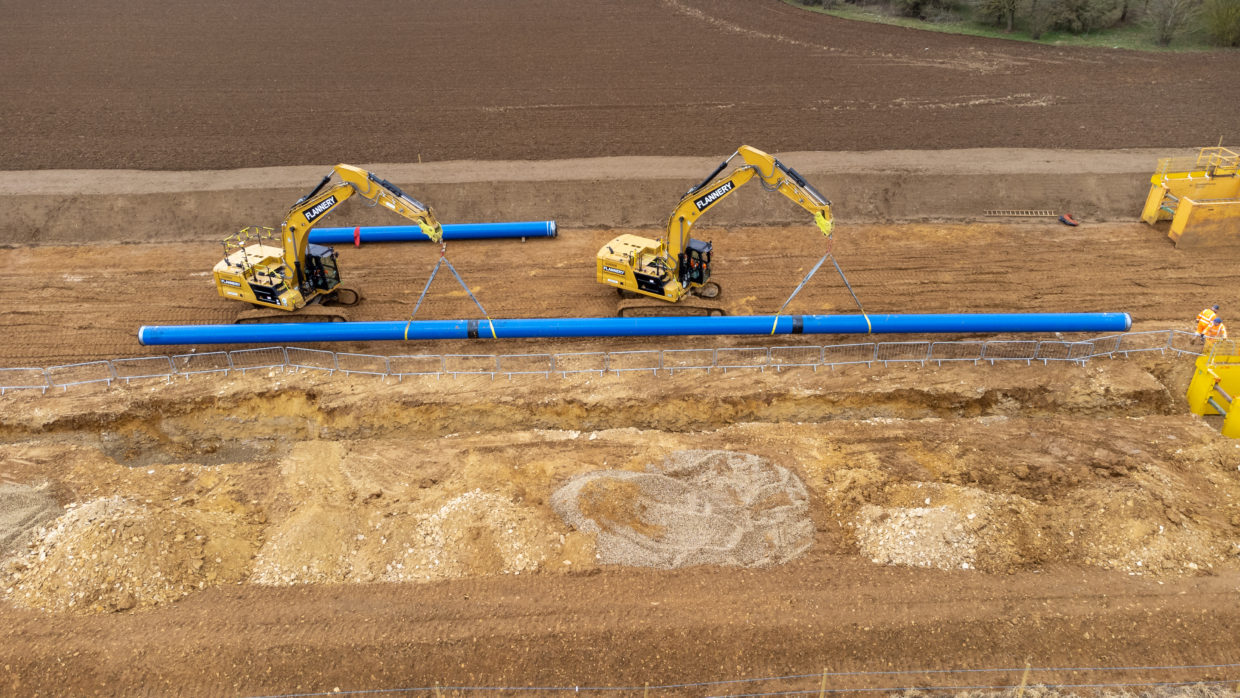
First pipes laid on Anglian Water’s Strategic Pipeline Alliance’s Bexwell to Bury St Edmunds scheme
We are building a 71km pipeline between Bexwell and Bury St Edmunds to improve the water supply in the area as part of Anglian Water’s Strategic Pipeline Alliance.
The pipe will connect the reservoirs at Bexwell and Rede, the water treatment works at Isleham and Gazeley and the water tower at Woodditton.
The Strategic Pipeline Alliance (SPA) is an alliance of Anglian Water (AW), Farrans, Mott MacDonald Bentley (MMB), Costain and Jacobs who are contracted to deliver one of the largest infrastructure projects in the UK.
The interconnected pipelines will require several Break Tanks and Pumping Stations at key locations to ensure water can be moved efficiently.
The SPA pipelines, when finished, will be hundreds of kilometres in length. It is Anglian Water’s flagship project, the biggest in the water company’s history and (in addition to being one of Europe’s biggest environmental projects) it is one of the UK’s largest construction projects.
The work is important because it will allow us to move water to where it is needed, which will make the supply more reliable and reduce the number of homes and businesses which have to rely on a single source of water supply.
The pipe is part of Anglian Water’s 25-year Water Resources Management plan to build an interconnected network across the region.
This work includes carrying out environmental and archaeological surveys and liaising with key stakeholders, including county archaeologists, ecologists, highways authorities and landowners.
You may see our teams carrying out survey work. We expect to continue our surveys into 2023 and will involve digging trial trenches, digs and boreholes along the planned route so we can better understand conditions below the ground.
We will work hard to minimise the impact on communities, and the environment and continue to talk to all those impacted by the work.
The installation will follow good industry practice using tried and tested techniques.
The most commonly used method to lay a pipe is the use of open cut trenches. Where we particularly need to minimise disruption, such as by main roads, rivers, railways and significant drainage and water ditches, we will use trenchless techniques.